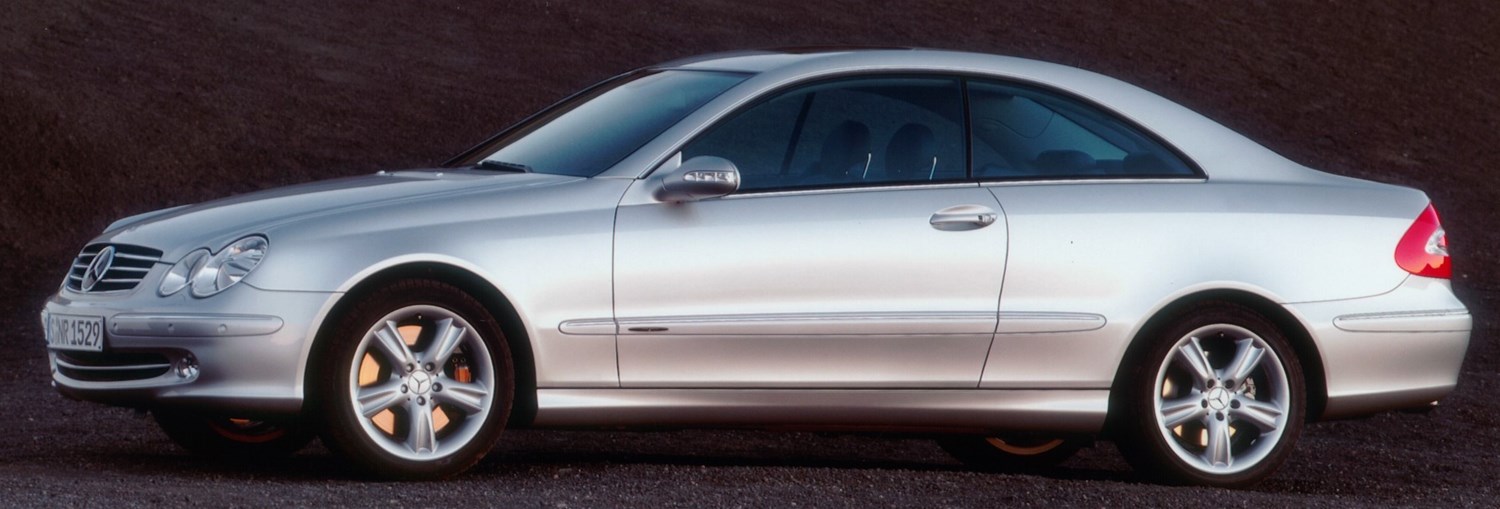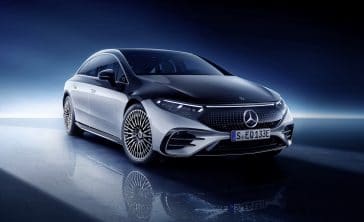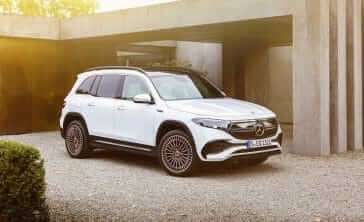Model review
The CLK was a rather short-lived name in the confusing Mercedes-Benz line-up, replacing the E-Class coupe and convertible models of the mid-1990s before, two generations later, itself being replaced by E-Class coupe and convertible models in 2010.
Although the CLK was positioned as E-Class in size – the 'D-segment' of larger executive cars – it was based on the smaller C-Class underneath although there was, for a spell, another C-Class coupe named the CLC. Mercedes styled the CLK to look like the larger E-Class to differentiate it from the C-Class.
The first generation car used a wide range of petrol engines, topped by the V8 CLK 55 AMG. This vehicle was also used as a Formula One safety car. For even higher performance, the CLK was used as the basis of a GT1 category racing car, the CLK-GTR. Only 26 of these cars were produced for road use, but they are almost entirely unrelated to the rest of the CLK range.
A second generation car was produced in 2002, with slightly softer looks. Merged headlight units, a wider grille with integrated Mercedes star and rounder tail lights all mark the second generation car apart from the first. This car introduced diesel power to the CLK range for the first time, but otherwise the engine range was largely unchanged.
Despite aiming for the executive coupe market, the CLK found itself up against other German brands' traditional entry level offerings.
For Audi, the A4 convertible was the closest fit until it introduced the two-door A5 (and its convertible model), while the BMW 3 Series coupe and cabriolet – which became the BMW 4 Series – are Bavaria's alternatives. There were very few other real rivals, as two-door versions of four-door cars of this size were rather unusual.
As Mercedes restructured its range in the 2010s, there was no room for the CLK any more, and the model was reabsorbed into the E-Class range it had originally sprung from.

Latest model
The second and final generation of the CLK was introduced in 2002, the same year as the E-Class was refreshed. The two cars again shared a number of styling cues, emphasising the market positioning despite the difference in chassis underneath. The car was face-lifted once, in 2005, which brought a number of minor tweaks and upgrades rather than any major work.
Trim levels were the typical early Noughties Mercedes line-up of Avantgarde, Elegance and Sport. There's actually surprisingly little between the three, and it essentially comes down to styling differences – the three trims even shared the same price point. Optional equipment was neither extensive nor expensive.
Power came from a range of four petrol and two diesel engines, although the convertible model did without the diesel options. A six-speed manual was fitted as standard on the lower-power models, with a seven-speed automatic as an optional extra (though this was at no cost near the end of the car's life).
Automatic was standard on the CLK280, CLK350 and CLK500 petrol cars. Sitting at the top of the range was the AMG-tuned CLK63 AMG, both convertible and coupe.
The CLK63 AMG served as the basis for the second ever 'Black Series' AMG vehicle. This served up another 25hp on top of the 113hp hike the car gained by switching from a 5.5 litre V8 to a 6.2 litre one.
A further special edition, the CLK DTM AMG, was introduced in 2004, celebrating Mercedes' fourth successive 'DTM' (German Touring Car) championship victory.
Reliability had been an issue for Mercedes at about the time the original CLK was introduced, but the second generation car proved rather robust. However, materials may not be up to modern expectations.
Value for money
Although in 2016 pounds, £29,887 may not seem a lot – the current C-Class Coupe starts just under £31,000 – it was rather an expensive car for the time, and with the relative difference that modern technology makes it look like a hard sell.
Standard equipment was originally a cassette player, though the CD became standard as of the 2005 facelift. Electric windows and air conditioning were standard, but leather was an option on every car until 2009 when it became a standard upgrade on automatic cars.
Satellite navigation and mobile phone connectivity were also optional extras. This applies to any engine too, so even at £47,254 for a CLK500, there's no standard navigation.
Running costs are something to be aware of too. The CLK was built at a time when current Euro 6 emissions regulations didn't apply. In fact pre-facelift second generation cars only had to meet Euro 3 regulations by law, and that's reflected in the fuel economy.
Best-case scenario for the CLK200 diesel coupe is 44.1mpg, while the convertible's best is the CLK320 diesel at 39.8mpg. The Black Edition would manage just 18mpg.
Depreciation on a car this age is almost moot, as they are likely not to lose any further value. It was relatively well insulated from depreciation in any case, although higher powered cars would suffer the most, except for the limited edition AMG cars.
Looks and image
The first CLK was a little unremarkable, but the second generation car had one of the best implementations of the Mercedes corporate face of the era of any car. It was just the right size to suit the proportions of the bubble headlights and wider new grille – the larger CL looked ungainly and weird with the same fascia – and the reworked roofline was rather smart.
The CLK name was also firmly connected to motorsport. Alongside the CLK DTM, celebrating Mercedes' dominance of the German Touring Car championship, the CLK was used to brand the CLK-GTR endurance racing car.
This won almost every race it entered and, to meet the rules of the GT1 class, a small number of £1m road cars were made – although the car is unrelated to the ordinary CLK in every conceivable way other than the name.
This gave the CLK considerable appeal as a status symbol, contributing to a strong overall image.

Space and practicality
While posited as an E-Class coupe, the CLK's a C-Class underneath and that means C-Class room on the inside. With a plunging roof line and only two doors to get at the interior space, that means it's somewhat limited, especially if you're in the back.
That said, headroom and legroom is tolerable for shorter journeys and children won't mind all that much – if you don't mind them kneeing the back of your seat. There are three seats in the back, but the middle one straddles a colossal transmission tunnel, making what little legroom there is even less.
The coupe has a 435-litre boot, which is definitely decent. Even the convertible has 390-litres, thanks to the roof taking up some of the space, but that's still the size of a modern hatchback's boot. The space is not quite as usable as with a hatchback, but there is still the option to fold the rear seats down.
Although the CLK was never tested by EuroNCAP, it was based on the C-Class which was tested in 2002 and 2007. In both cases the car scored five stars, with three stars for child safety in the enhanced 2007 test. Although these results cannot be compared to modern crash tests, they were at least safe for the era and the CLK had six airbags and ESP as standard.
Engines
At the end of its life there were seven engine options for the CLK, two diesel and five petrol.
The 220CDI, a 2.2-litre diesel, was only available on the coupe model. This offered 147hp, which was enough for a 0-60mph sprint of 10.0s and a 137mph top speed. Emissions rated at a lowest of 169g/km, depending on specification, equivalent to 44.1mpg.
Above this was the 3.0-litre, six-cylinder 320CDI diesel. This 221hp unit still rated at 39.8mpg (193g/km), improving the 0-60mph time to 8.4s and lifting the top speed up to 150mph.
Petrol power started with the supercharged, 1.8-litre 200 Kompressor. With 181hp, this achieved the 60mph sprint in 8.6s (9.1s for the convertible) and a top speed of 147mph. CO2 emissions rated as low as 198g/km, depending on trim level and wheels, for a 34.0mpg fuel economy (32.8mpg in the convertible).
The lowest output six-cylinder petrol was the 3.0-litre 280. With 229hp, the 0-60mph time fell another 1.4s to 7.2s for the coupe and 7.7s for the convertible. Top speed was limited to 155mph, as with all more powerful options, while both convertible and coupe returned 29mpg with this engine, at around 220g/km CO2.
A larger version of the engine was the 3.5-litre 350. Although it only had 39hp more, at 268hp, 0-60mph times fell by another second – 6.2s for the coupe, 6.7s in the convertible – while keeping fuel economy close to the smaller engine at 28.5mpg
The regular CLK range was crowned by the CLK500, a 5.5-litre V8. This was considerably more powerful, with 382hp, making the sprint to 60mph a matter of just five seconds (and the convertible just 0.1s further back). Fuel economy just about dips below 25mpg, with 24.8 for the coupe and 24.4 for the convertible, depending on your trim choices.
However, the cherry on the cake is the 475hp, 6.2-litre V8 CLK63 AMG. Although still limited to 155mph, it manages 0-60mph in just 4.4s (4.5s for the convertible version – making it one of the quickest convertible cars made to that point in time). You'll pay a 19.9mpg penalty for that though, falling to 18mpg if you opt for the 25hp extra in the Black Series car.
Running costs
The CLK won't be a cheap car to run by any stretch of the imagination, unless you limit yourself to lower-power cars like the 220CDI and 200 Kompressor, but then you shouldn't expect it to be as it's a large, premium coupe or cabriolet.
Even so, 44mpg combined at best is not a great showing, especially for a 2.2-litre diesel. However, even though that's measured using the optimistic NEDC emission and economy test, the bulk of the CLK range is powered by large, naturally-aspirated petrol engines, so you shouldn't see figures too radically different from the official on-paper economy – even if the on-paper economy is poor.
The second-generation CLK, and even the facelift, overlaps a change in VED regulations. This means that some of the thirstier models may cost you £210 a year less to tax if you buy a car registered before 23rd March 2006 – enough for a couple of extra tanks of fuel a year! It may be worth your while to shop a little carefully with this in mind.
Insurance is a mixed bag, but again on the expensive side. The entry level cars are in group 33, or 38 for the convertible, and that's a little steep for a car without satnav that's no quicker than a middling hatchback. However, even the CLK500 is only group 44 (47 for the convertible), so not as expensive as you may think. The AMG cars are, of course, group 50.
By now, any CLK will have done most of the depreciating that it will ever do, so you won't lose much as time passes. The significant parts-sharing with the C-Class will mean that parts availability is good, and any repairs needed ought not to be too costly either.

Things to look out for
The late 1990s and early 2000s were not a good time for Mercedes-Benz when it came to reliability, but by the time of the second generation CLK it was back to its best. The final year for the CLK actually saw It topping the annual JD Power survey in the sports car category.
It has been affected by a couple of recalls that affected a number of different Mercedes models sharing the same engine, so it will be worth checking if your car was affected and repaired.
Other areas of concern are the convertible roof – which should always be checked for operation and sealing – and the self-sealing side glass that Mercedes uses in order to not need a B-pillar. This causes a lot of wind noise if it doesn't shut properly and could be problematic even on brand new cars!
Rivals
Ultimately the direct rivals for the Mercedes CLK came down to, as you'd expect, one Audi and one BMW.
Although it was marketed as a coupe/convertible E-Class, the CLK is C-Class in size and based on the C-Class, so it's in the firing line of its rivals' C-Class coupe and convertible alternatives. Originally this would have been the Audi A4 and BMW 3 Series, but as those brands have also reorganised their line-ups, it's the A5 and 4 Series.
There really aren't that many other straight rivals. Volvo's C70 Coupe Convertible did tread much of the same ground, as did the vanishingly rare Infiniti G37. Ignoring the saloon-based nature of the CLK, the Jaguar XK8 could be another rival, as indeed could the Porsche 911, especially when it comes to the performance of the AMG cars.
Depreciation warning
The last CLKs were in showrooms in 2010 and it's almost certain that even the newest cars will have just about finished depreciating by now. For the most part, cars will lose the greatest part of their value in the first three years, and the greatest part of what remains in the next three years. This means that you're not going to be losing a lot of money whatever car you buy.
However, be aware that for the performance models, face-lifted cars registered before 23rd March 2006 will be the most desirable as they avoid the high VED penalty levied on newer cars. It won't matter so much on the less-polluting cars though, so focus on a car with decent specification – one new enough to have leather added as a standard item particularly.
AMG models are unlikely to ever depreciate too far either, so performance bargains may not be on the menu but there's good investment potential.





